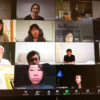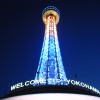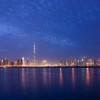Date of Issue:31 January, 2020
・Activity 1/ The 65 Night walk: Ikebukuro (2019.11.15)
・Activity 2 / The 62 Round table discussion (2019.11.29)
・Activity 3 / RE-IMAGINING GOLDEN MILE(2019.11.01)
Investigating the nightscape of Ikebukuro–a city that escaped the clutches of disappearance
2019.11.15 Tomoya Furukawa+Shinichi Sakaguchi+Wen Yan Zhang+Noriko Higashi
Toshima-ku is aiming to be a city known worldwide as a center for art and culture. At their plan’s center lies within the redevelopment of Ikebukuro. We focused our investigation on the light of the parks within their redevelopment and compared it with Shibuya and Shinjuku.
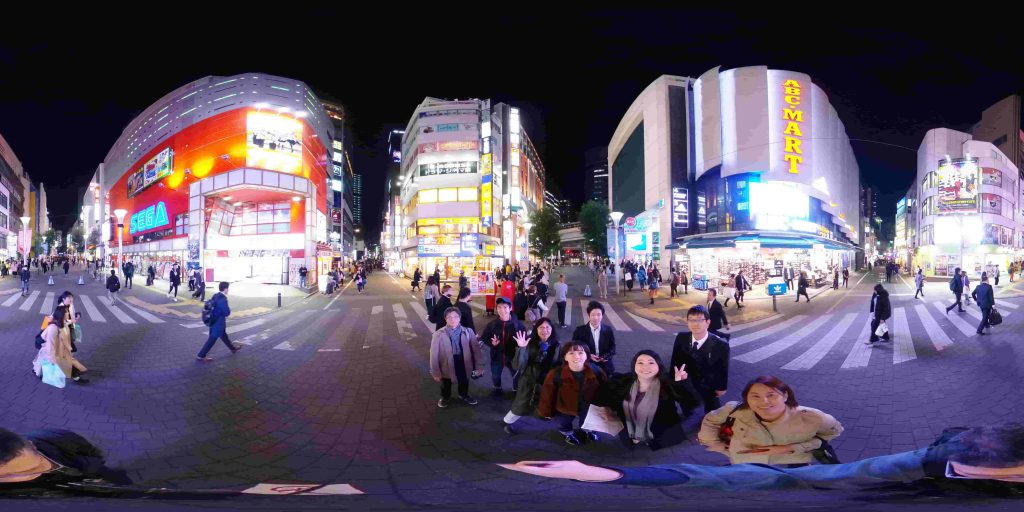
A 360 degree photo of Sunshine Street bursting with white light
Group 1: JR Ikebukuro→Nakaikebukuro Park→Sunshine60→West Ikebukuro Central Park
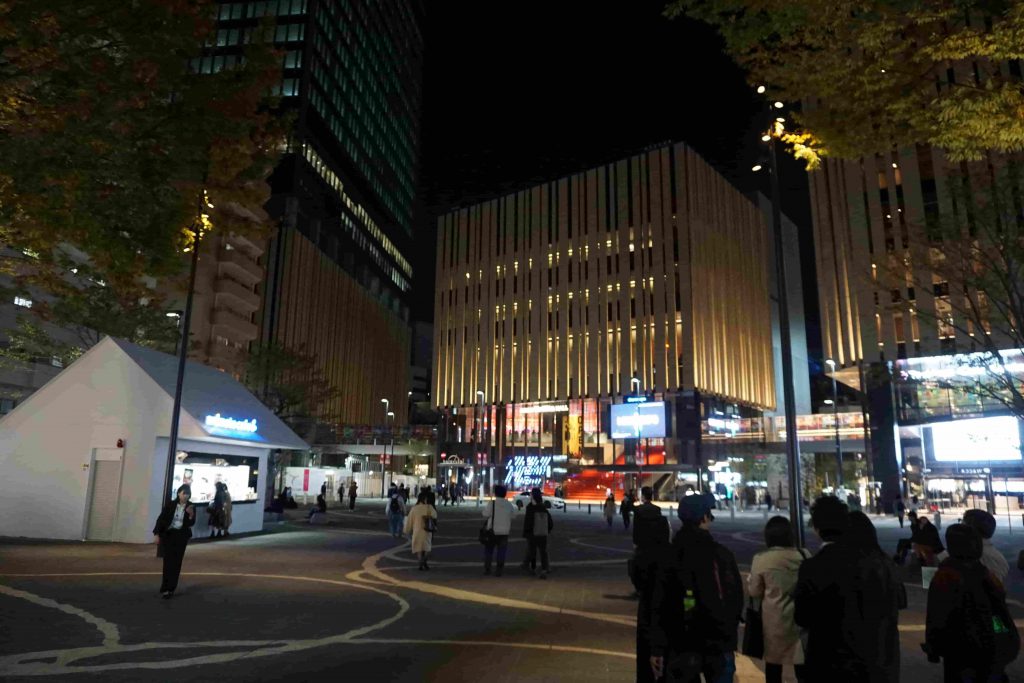
Nakaikebukuro Park and HAREZA creating a good mood. The red staircase stands out
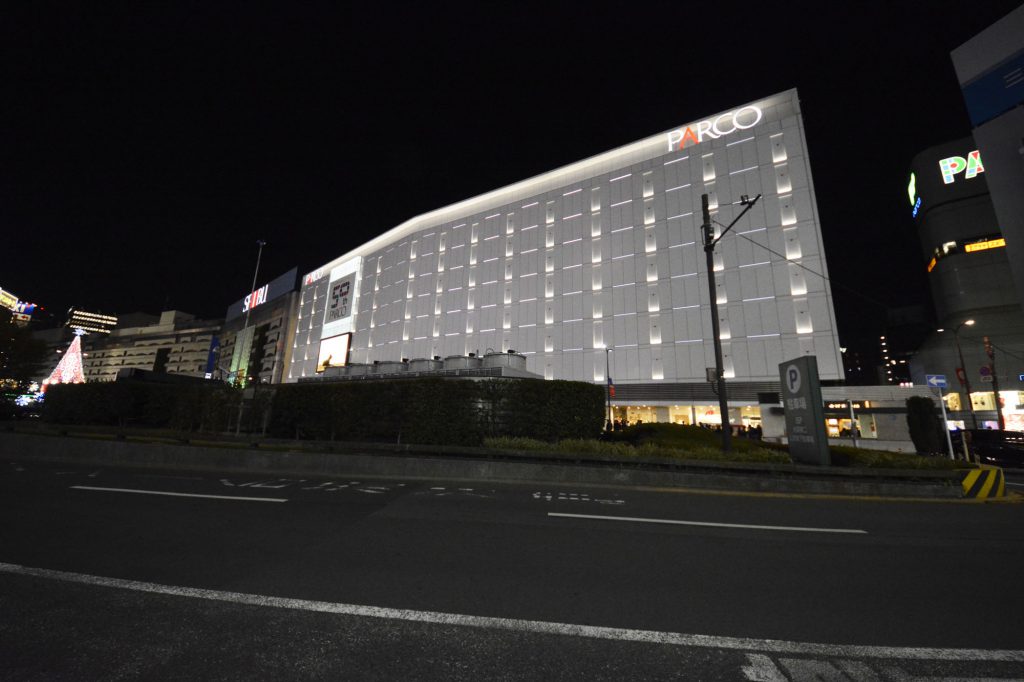
The white façade on PARCO leaves a good impression
Group 1’s main objectives for their investigation was the newly opened HAREZA and the renewed Nakaikebukuro Park. We started out nicely with the well-coordinated white façade of the PARCO and Maker’s logo, and the well-rounded Bic Camera’s façade, but soon we were disappointed by the excessive amounts of light that spilled from the stores. The pink Christmas decorations on the streetlights on Sunshine Street also got bad reviews from us. Some places showed an intention to create an exquisite or posh mood but it’s a mixed batch.
Our main objective this time: Nakaikebukuro Park was lit very evenly at a perfect brightness, allowing it to be a space suited for many purposes, deserving of many Hero calls. HAREZA’s red staircase that leads to the theater is highlighted and stands out even from far away, setting the mood for people headed there at night.
Next, we headed towards Sunshine 60 and Sunshine Street, which has been open for about 40 years now. The excessively bright lights that was everywhere in the area reinforced the ‘THE Ikebukuro’ stereotype that we all already had engrained in our brains. There were many ‘villain’ calls that arose due to this, but looking at the large number of people gathered around this area we thought that perhaps this is a different variation of light that catches visitors.
East Ikebukuro Central Park is surrounded in an eerie and frightful darkness. I have heard stories that this park used to be the execution grounds to this area, so naturally the people sitting in the dark seemed menacing, making me want to leave as soon as possible. As my eyes adjusted to the darkness, it became apparent that the park was brighter because of the light spillage from the tall buildings around it. But even just imagining the park without light just gives me the creeps. (Noriko Higashi)
Group 2: JR Ikebukuro East Exit→Green Street→Toshima Area Government office→Around South Ikebukuro Park
We started from Green Street. It was unique in that the mood created by the lighting and the streetlights changed every block. The streetlights were high color temperature lights that was there from before, but the brightness is lowered and avoids a glare, which reduced how much it irritated us.
As you walk down the street, the color temperature decreases and the fixtures changed to some looking like garden lights or spot lights with a little height to them. The mood it created was great but sadly it’s ruined by the fact that they shine right into your eyes and is way too bright.
The Toshima Area Government Office was developed alongside the skyscraper apartments around it. The lights on its staircase demonstrated great care to hide the lighting fixtures whilst beautifully lighting up the staircase.
We also walked along streets that were remnants from the past Ikebukuro. If you look at the High-rise apartment buildings from here, the residences’ lights have a nice lower color temperature, but it just accentuated the high color temperature of the Sunshine buildings offices.
Lastly, we explored South Ikebukuro Park. There were interesting lighting fixtures, like ones that were made to look like fruits on trees, creating a wonderful atmosphere in the park itself. Sadly, the light from the surrounding buildings were too bright causing glares even here in the park, ruining the mood.(Shinichi Sakaguchi)
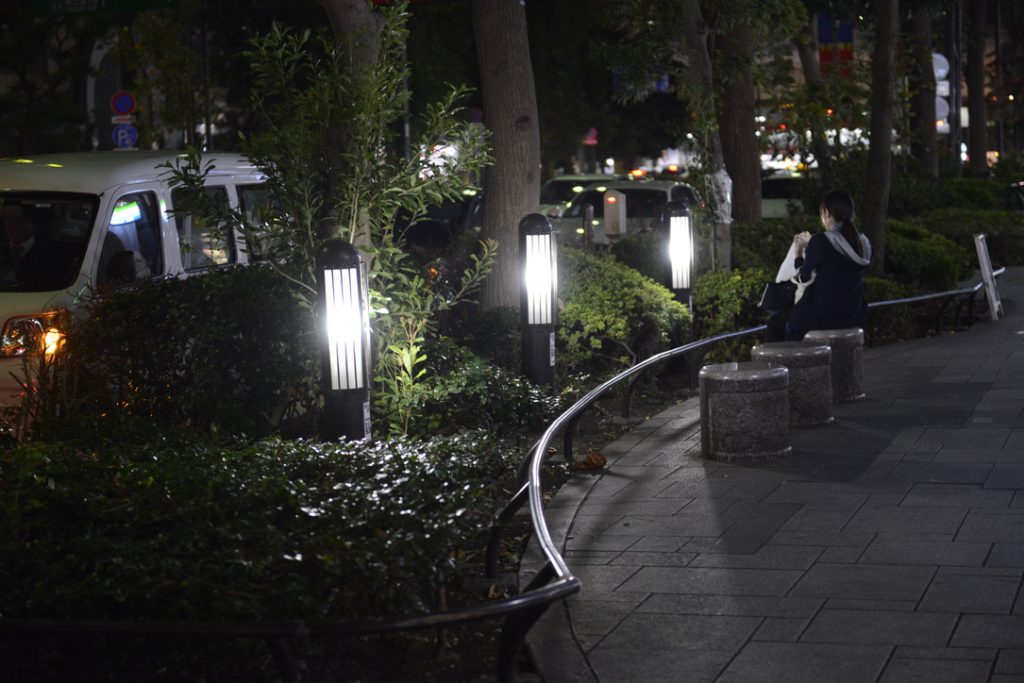
Green Street, the bollard lamps in front of the benches are too bright
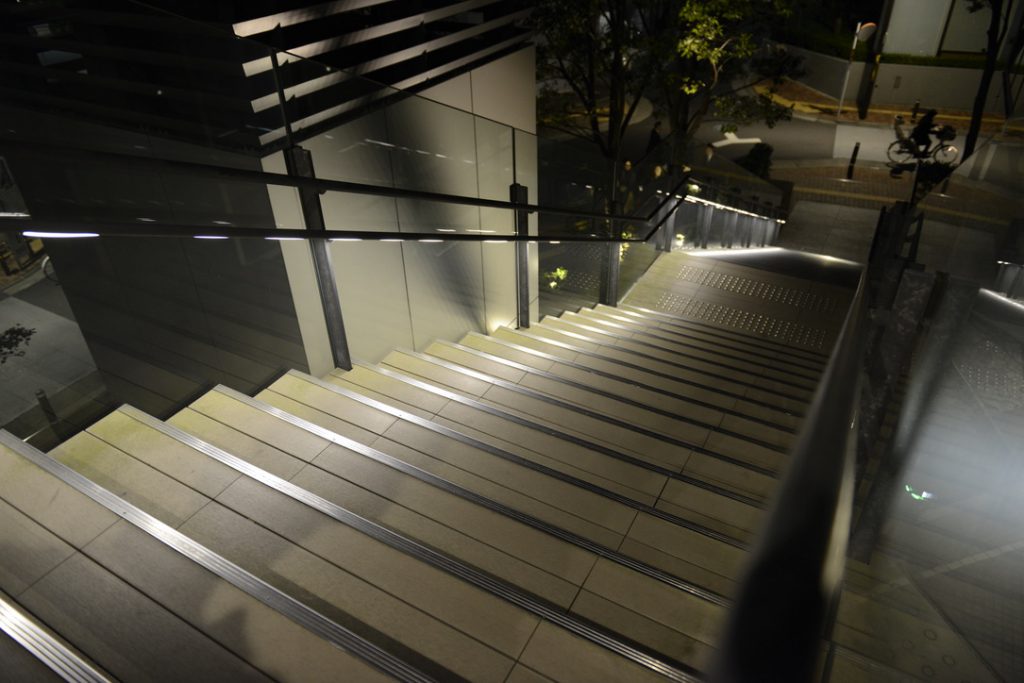
Staircase outside the Toshima government office. The lights don’t leave a glare in the eyes and got a good review from us
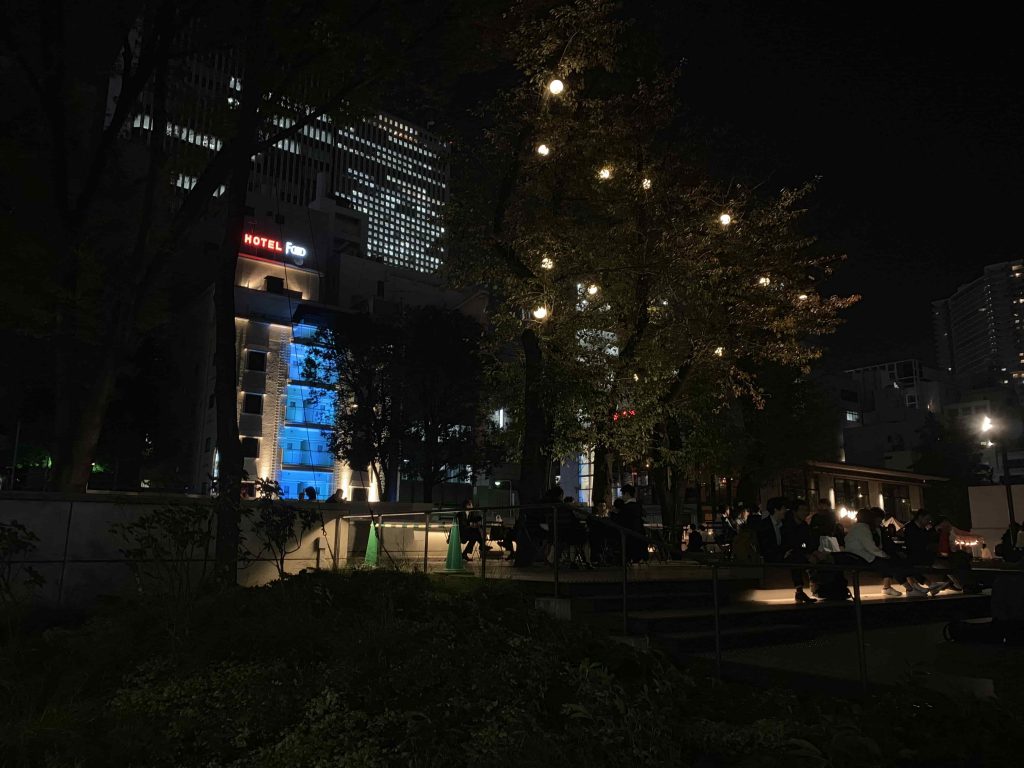
Lighting like fruits on the tree Lighting from neighbors ruins good atmosphere in the park
Group 3: Ikebukuro Nishiguchi Park → Jiyu Gakuen Myonichikan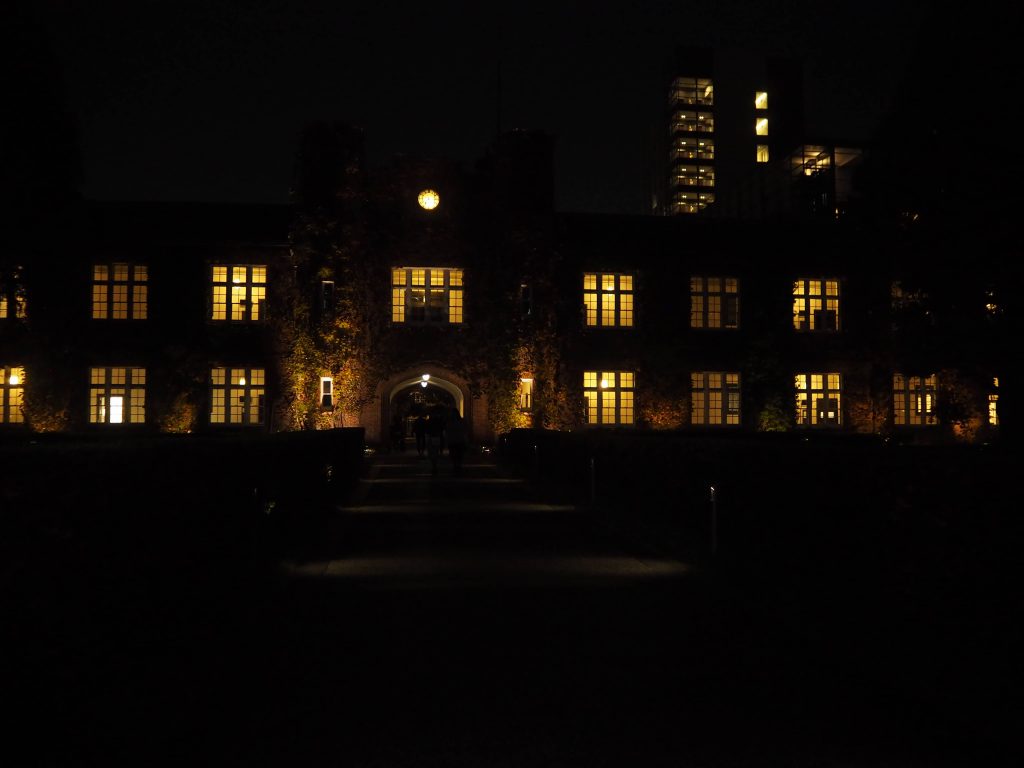
Ritsukyou University’s comforting lighting
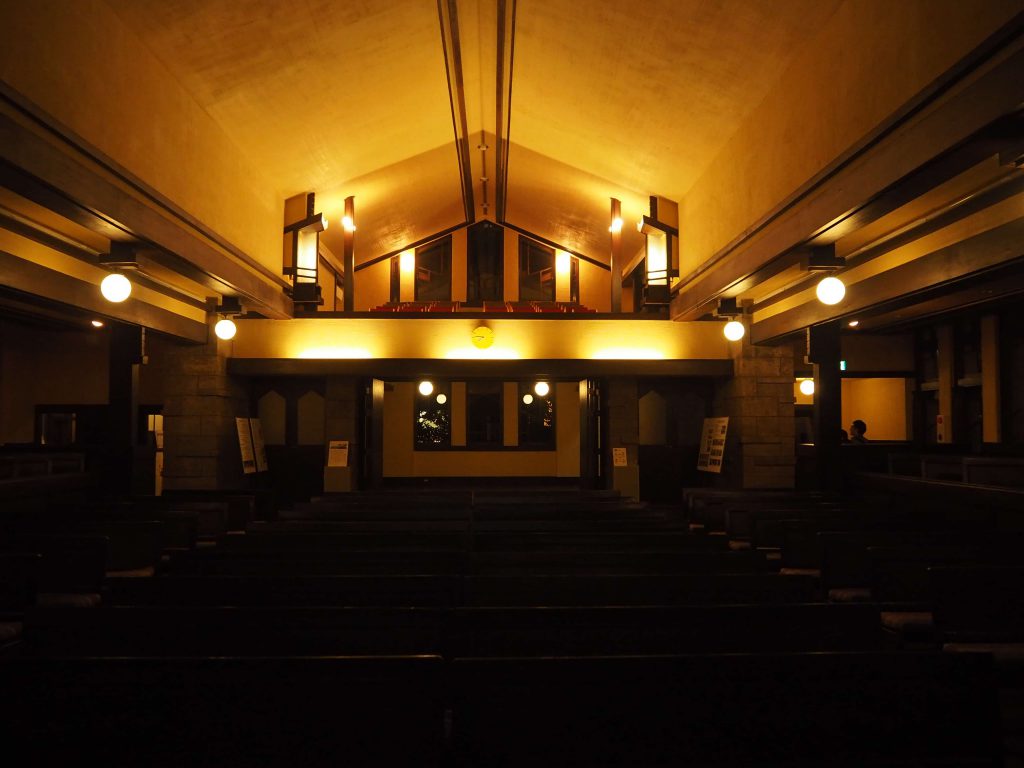
Jiyu Gakuen Myonichikan- A villain spotted within the comforting atmosphere!
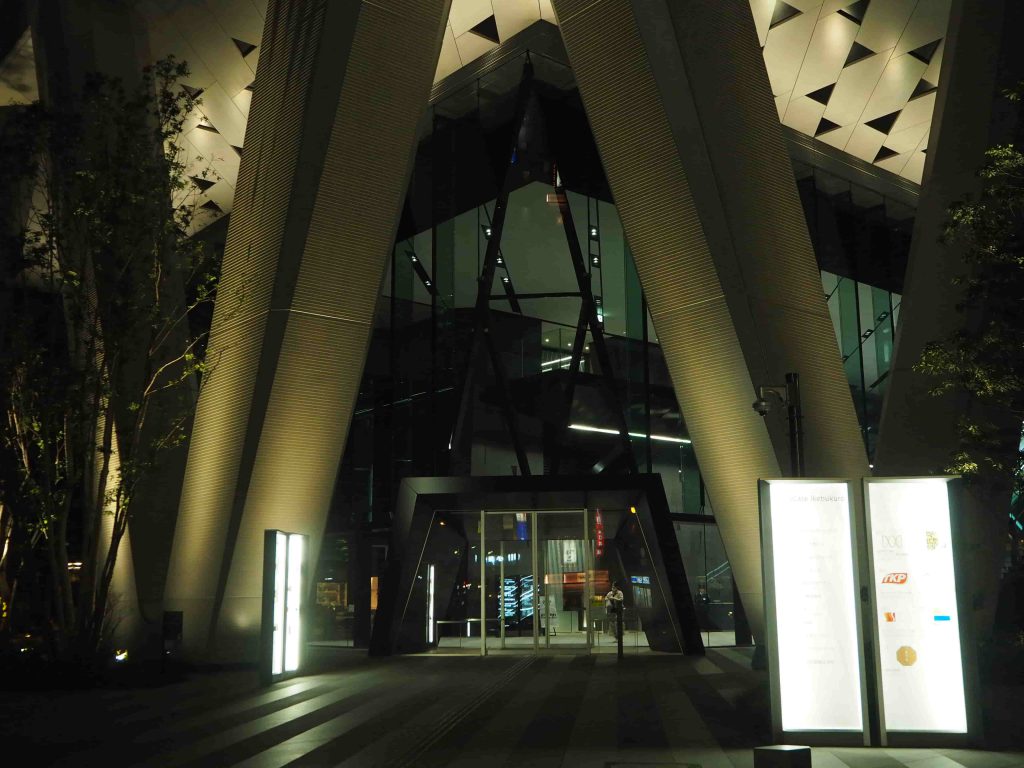
SEIBU Gate Depending on the angle, the signs’ lights are glaringly bright
Group 3 explored the area from Ikebukuro Nishiguchi Park to Jiyugakuen as our explorers for the Arts and School areas. We looked at new venues as well as historical buildings, learning about the light of the town on the way.
Group 3 first visited Rikkyo University. The university limited the amount of light that is shining on campus to select areas and the light from windows, creating a soothing atmosphere. The warm lighting that envelopes the buildings and the dimly lit courtyard contributes to this the most.
On the other hand, the streetlights around Rikkyo University emitted a cold white light, which felt out of place in comparison to the warm light with the low color temperature of the campus itself. There were opinions that it was disappointing as if the lights were a lower color temperature and worked on to reduce the glare, it would be perfectly synchronous to the campus.
We also visited the Jiyugakuen Myonichikan, which is a cultural heritage. The lighting design was impressive in addition to the spectacular glass windows, ceiling, and atrium. The round lighting fixtures they used emitted light that blended and meshed well with the architecture, leaving a good impression. We found out that it was designed for a color temperature of 2300K which is often associated with a calming effect. The crackling sounds and the waving flames coming from the fireplace added to this atmosphere. Many agreed that there is nothing that can beat fire, the origin of all light, which led to it being called a lighting Hero.
The disappointing part was the lighting above in the lecture hall. It seems they have recently switched to LED fixtures, but it doesn’t fit the space and doesn’t seem to be capable of changing like many stage lighting fixtures. Other villains we found in the area were the bright streetlights between Myonichikan Lecture hall and Jiyu Gakuen Myonichikan. These lights didn’t fit the surrounding area and therefore were declared a villain.
Lastly, we visited the SEIBU gate that opened this spring. We were all excited as it was new architecture, but there were things like the bench lights and signs that were too bright that harmed our impression of it.
Ikebukuro was full of architecture that had a lot of thought put into its lighting, but also non-uniform streetlights. The streetlights are different in areas and perhaps it’s for preventing crime.(Wen Yan Zhang)
Group 4: JR Ikebukuro North Exit→Mizuki Street→West Ichibangai Central Street→Romance Street→Tokiwa Street→Heiwa Street→Gekijyo Street→Tokyo Metropolitan Theater/Nishiguchi Park
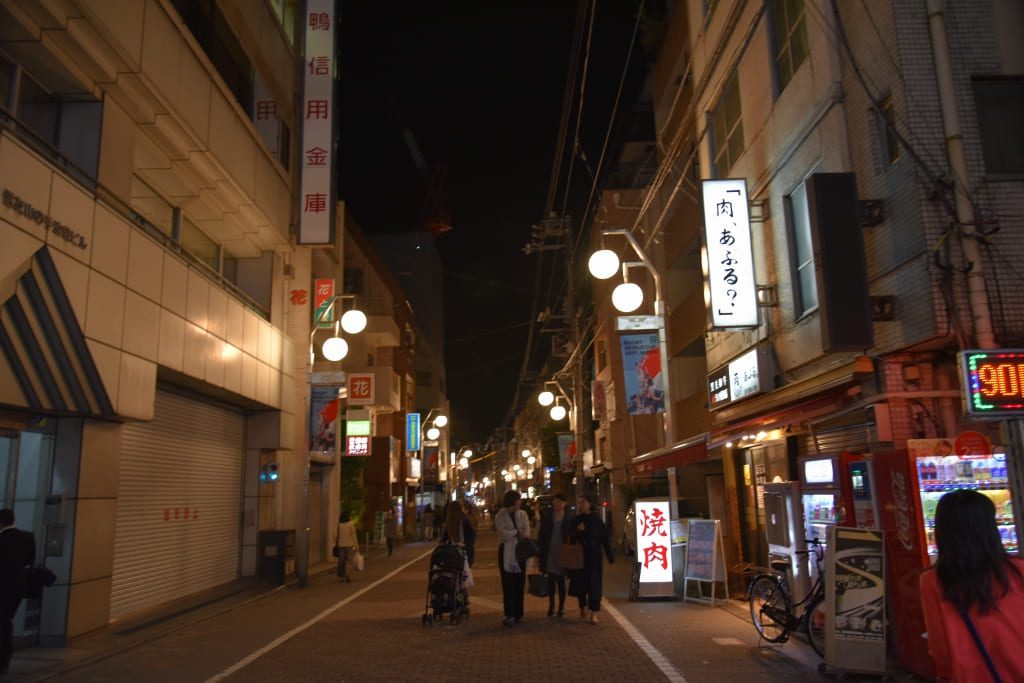
Heiwa Street The orange lights illuminate the alleys safely.
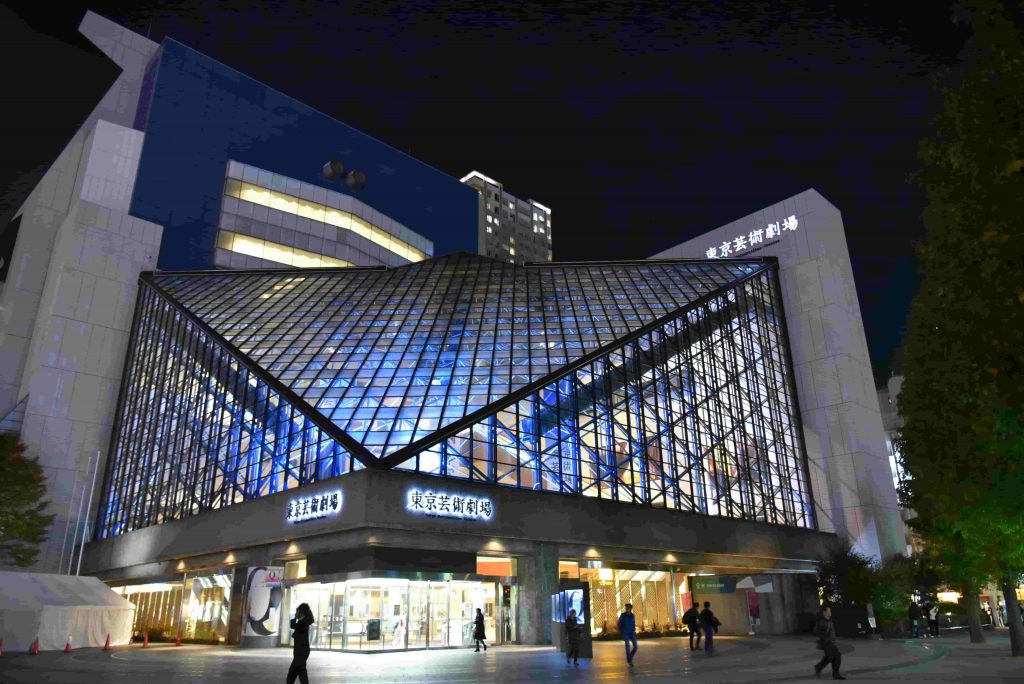
Tokyo Metropolitan Theater Lit with an elegant blue, giving the it a touch of color
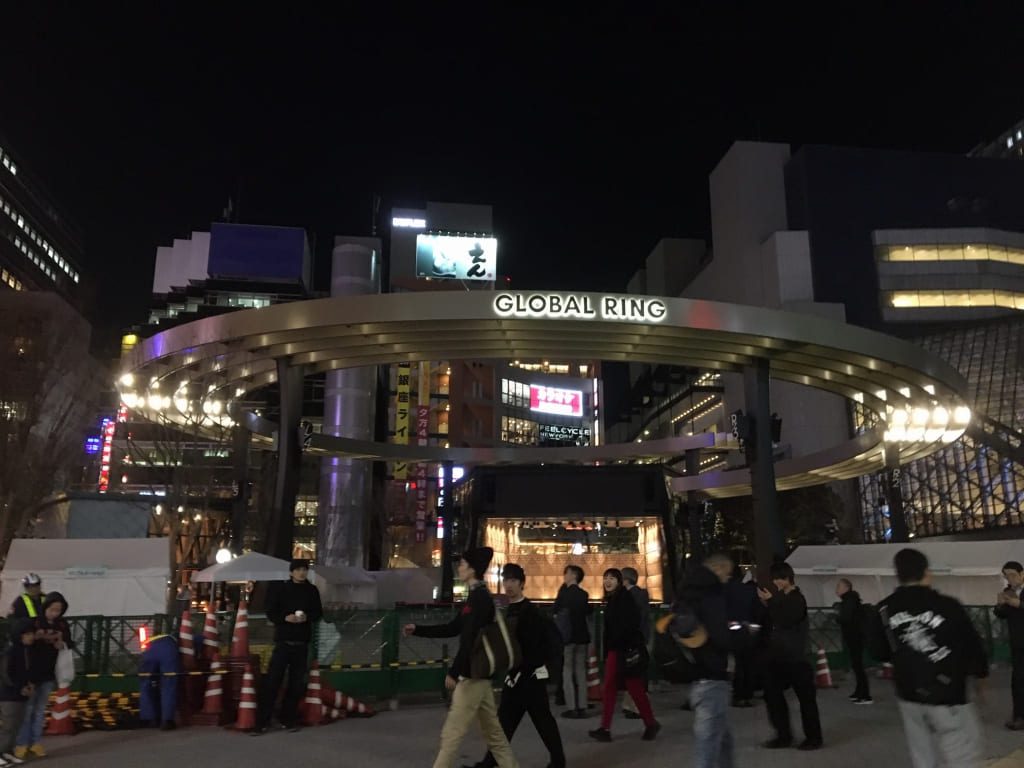
Global Ring The rings’ LED can be seen from people passing by
Group 4 explored the Kanrakugai area Northwest of Ikebukuro Station and Nishiguchi Park.
・Kanrakugai: Also called Chinatown, Kanrakugai is filled with a mixtures of restaurants, bars, and red-light district locations but due to the older buildings in the area, it lacks the flashy and bright advertisements that you see in similar areas in Shibuya and Kabukichyo. Therefore, while it is often identified as a famous location in Japan, it doesn’t have same punchy bright lights impression and instead gives off a lighting environment that is reminiscent of the Showa era.
There were many buildings that gave off lights that were way too colorful, or some stores that advertisement signs were bright white, showing a lack of care for the lighting environment. But within these, there was a ramen shop using a white wall and a red chili pepper as a sign that looked fancy and was well lit, being the standout hero of this environment.
The streetlights’ design varied with each street and this variety is one of the unique parts of this place. There would sometimes be lights that varied in not just design but also function within a single street. We identified the villains in the area as the replacement LED lights that had bad glare and the zombie LED lights that were barely on.
Thankfully, Heiwa Street at the end of the Kanrakugai, was lit with a warm orange colored streetlight and spaced evenly (50Lx Brightness on the Road), releasing our tension and safely lighting the area.
・Tokyo Metropolitan Theater & Renewed Nishiguchi Park: Tokyo Metropolitan Theater installed blue lights in three corners of the glass atrium that added a dash of blue to the architecture, while making the interior space relaxing and calming. Therefore, we decided to name it a hero.
As the space under the Global Ring is often used as a temporary outdoor stage, there are stage lights that are installed here that work with music and the fountain. Therefore, the performance and expressiveness of these light were prioritized when deciding positioning, angle, and brightness, which resulted in a disappointing glare. We are looking forward to contents that would calm and entertain visitors. (Tomoya Furukawa)
There are countless other renewals and construction going on other cultural facilities and parks within Ikebukuro. As we saw on this investigation, compared to Shinjuku and Shibuya, the brightness of the area is relatively lower and have more historical locations/buildings, which led to changes to our impression of Ikebukuro. (Noriko Higashi)
The 62nd Lighting Detectives Salon
2019.11.29 Noriko Higashi
We facilitated a review of our exploration of Ikebukuro. We presented our findings as the 4 groups that explored Ikebukuro. It was a great discussion with 20 participants.
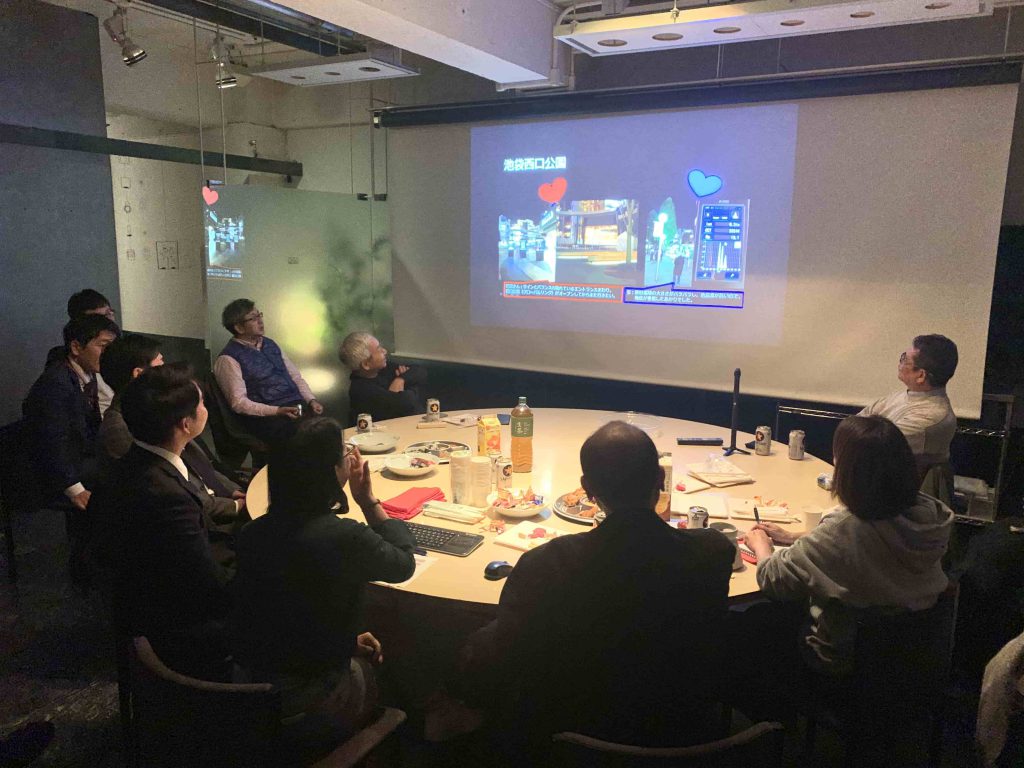
Explanations using photos taken on the day
Review of Ikebukuro Nightwalk
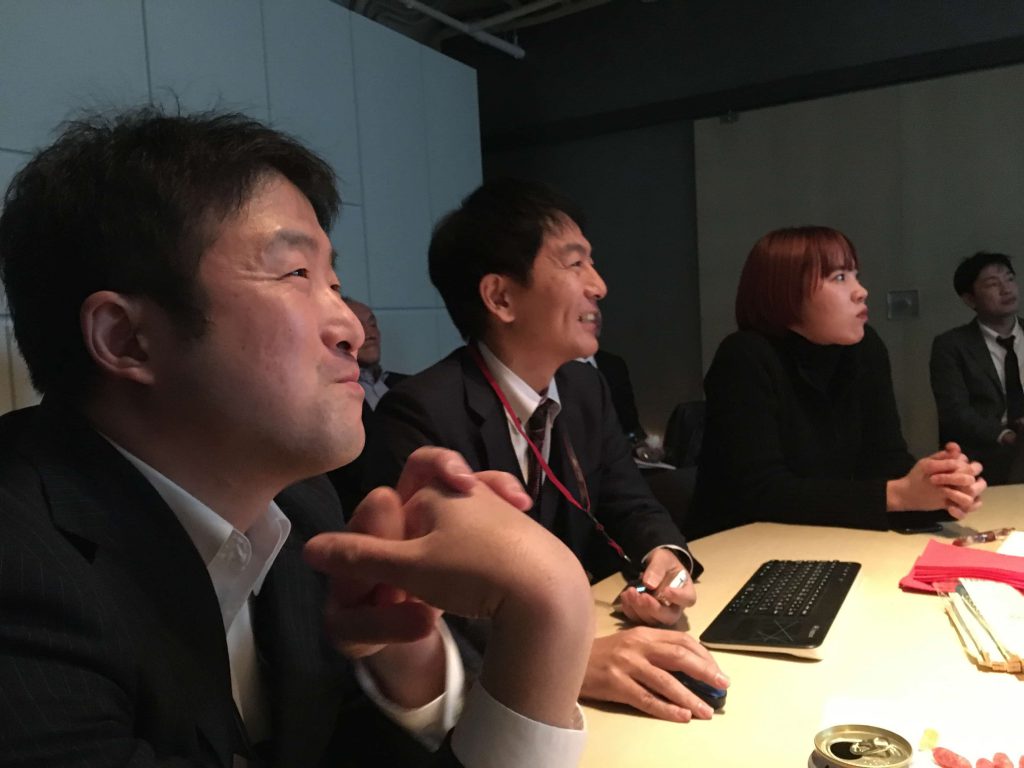
Each group gathered their conclusion and presented them
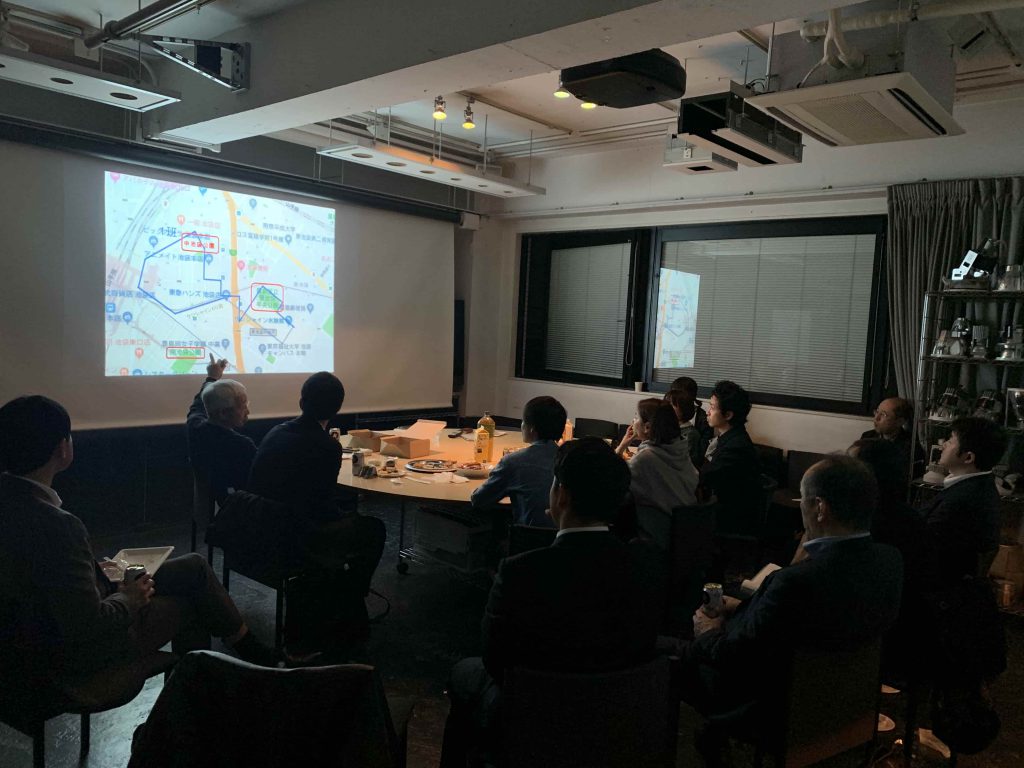
20 participants sitting around a round table exchanging opinions
We facilitated a review meeting for the Ikebukuro nightwalk that happened on November 15th. As we split into 4 different groups in Ikebukuro and explored completely different areas, it was a fun time with many unique details in each presentation.
The Hero identified by group 1, who mainly explored the newly opened HAREZA and Sunshine 60, was the elegant white façade of PARCO, the HAREZA’s exterior, and the calm space of light in Naka-Ikebukuro Park.
On the other hand, the villains they identified were the large home electronics retailers and the other streets that were too bright. The worse offense, however, was committed by the dark and gloomy East Ikebukuro Central Park.
Group two explored starting at the East gate, then the Toshima area government office, and South Ikebukuro Park. Their villain that they identified was the overwhelming variety of bollard lights and streetlights. They perceived the glare from these lights to be quite strong and was just too bright.
Group 2’s hero is the lighting on the Toshima area government office stairs and its railing and the lights that looked like cherries in South Ikebukuro Park. Most of South Ikebukuro Park was dark, but some parts like the playground was highlighted and was a calming place even at night.
Group 3 explored Rikkyo University and Jiyuu Gakuen Meinichikan, and found it amazing. They recommended it as a place you must visit at night.
However, they did point out that the streetlights around Rikkyo Univerisity was a cold white color, but would be much better if it were light bulb colored and with reduced glare. Others also pointed out that the crime preventing lights in the residential neighborhoods were too bright and hurt their eyes.
Group 4 raised the Tokyo Metropolitan Theater as their Hero. The beautiful white and blue lighting leaves an impression and was elegant, leading to high praise. Heiwa Street was also praised for its streetlights that were at a low color temperature and a perfect brightness. There were opinions that this was a soothing light.
Their villain was the Global ring that was going to finish construction the next day. The indirect lighting on the circular louver’s dotty look and the fact that you can see the lights was disappointing.
Most thought they have a better impression of Ikebukuro than before they explored the area. It seems everyone was able to appreciate the thought that was put into making Ikebukuro and its parks more fun and safe to explore, even at night.
We can’t keep our eyes off the ever-changing nightscape of Ikebukuro. (Noriko Higashi)
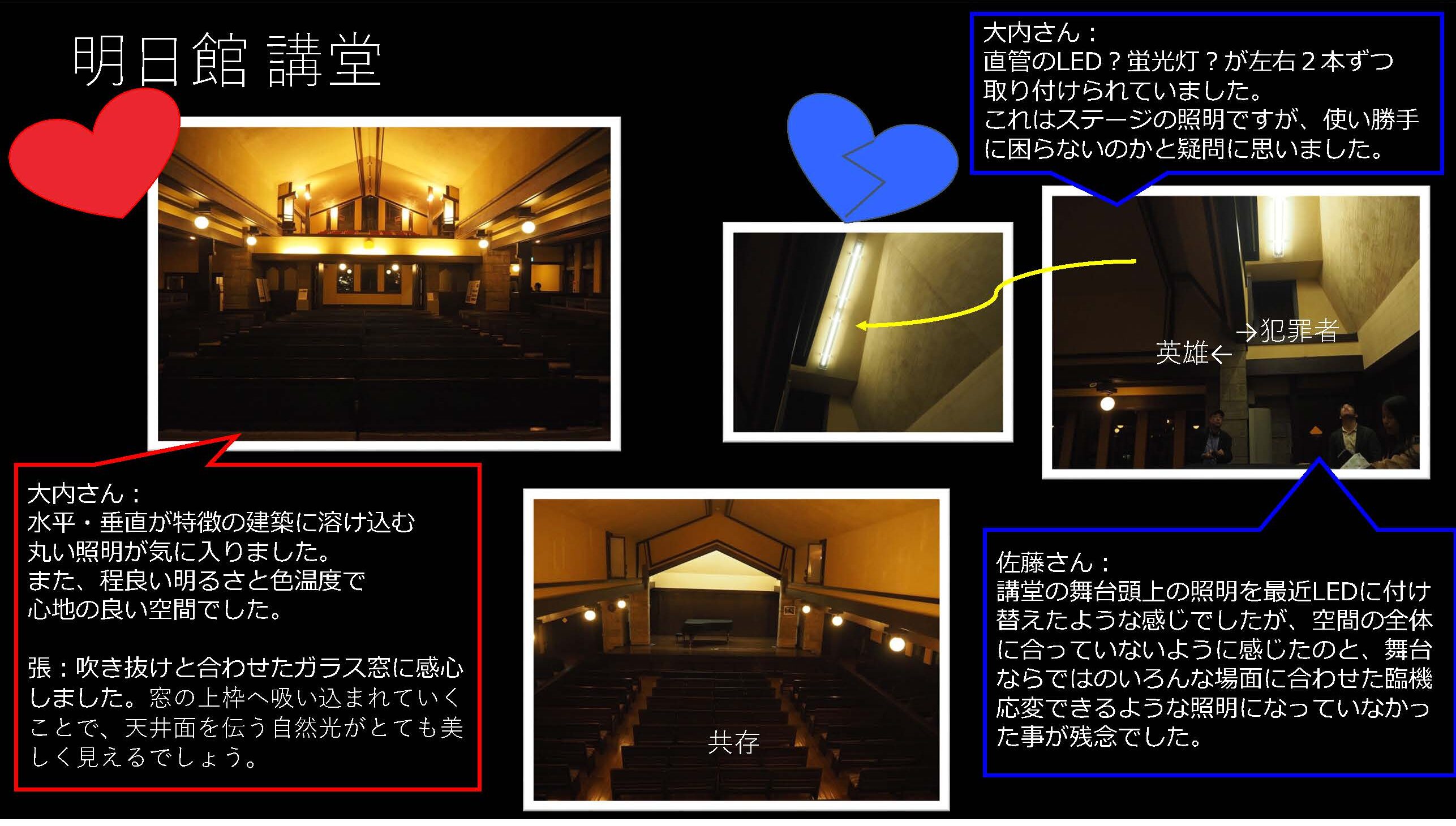
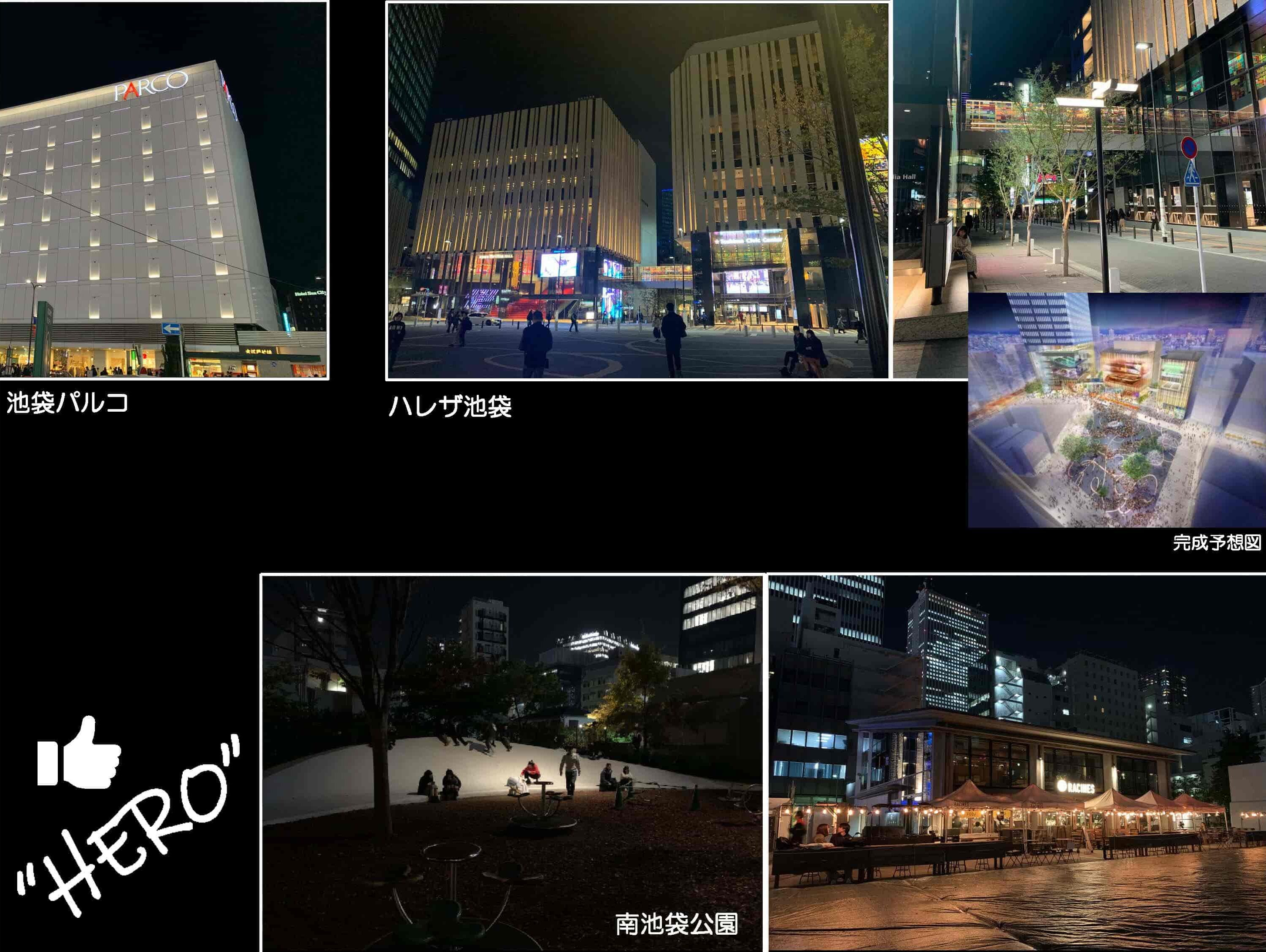
Presentation Slide
RE-IMAGINING GOLDEN MILE
2019.11.01 Sherri Goh+Niken Wulandari Sutanto+Quratuaini Jamil+Clement Lee
Golden Mile Complex and Golden Mile Tower are two of the most iconic buildings in Singapore that were completed between 1973-1974. Lighting Detectives investigated how lighting can contribute to preserve these historical buildings.
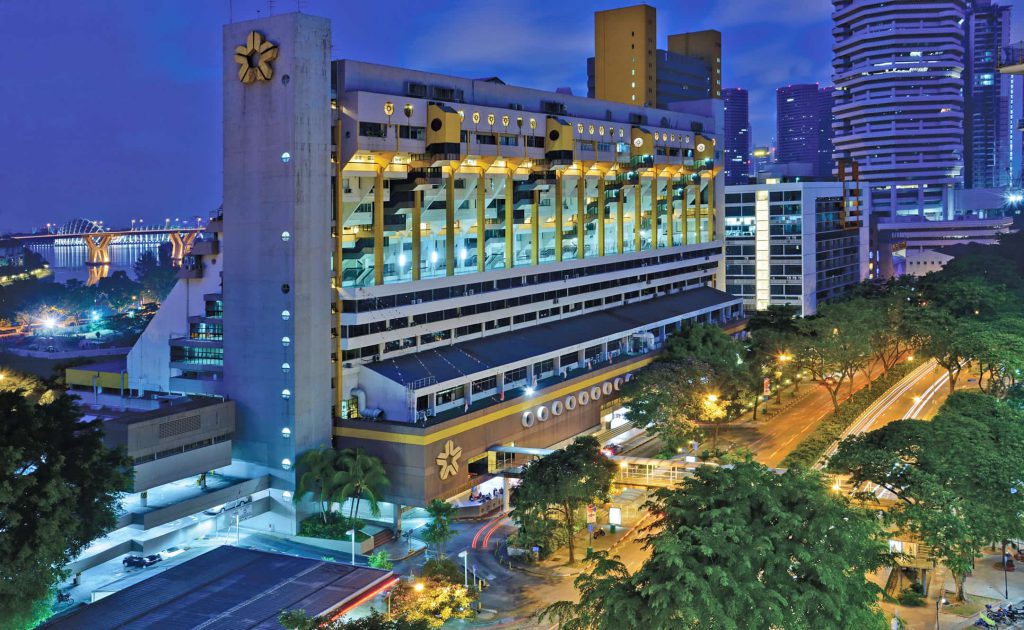
A blend of Thai culture + Treasure trove of groceries and food + Pubs and KTV creates a unique blend of mismatch that invokes a flavor unique to Golden Mile Complex.
Photo by Darren Soh, Singapore.
Introduction
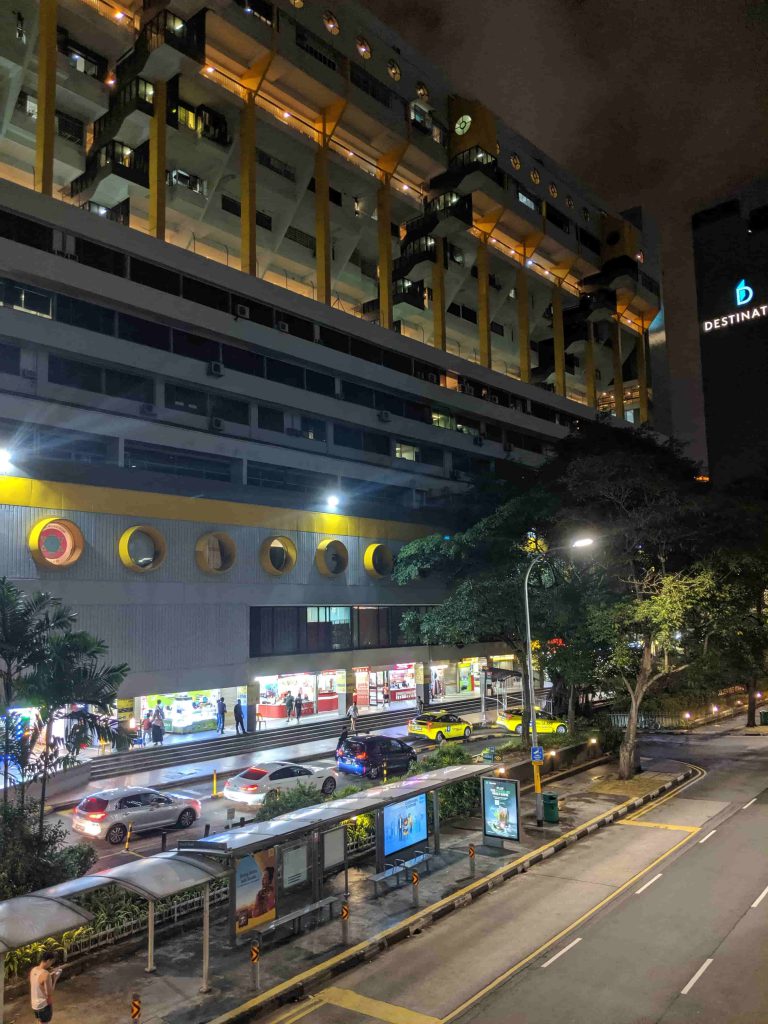
A typical evening at Golden Mile Complex:the retail areas are still busy operating at the lower levels,while the offices at the mid levels are closed,and the residents are resting at the upper levels.
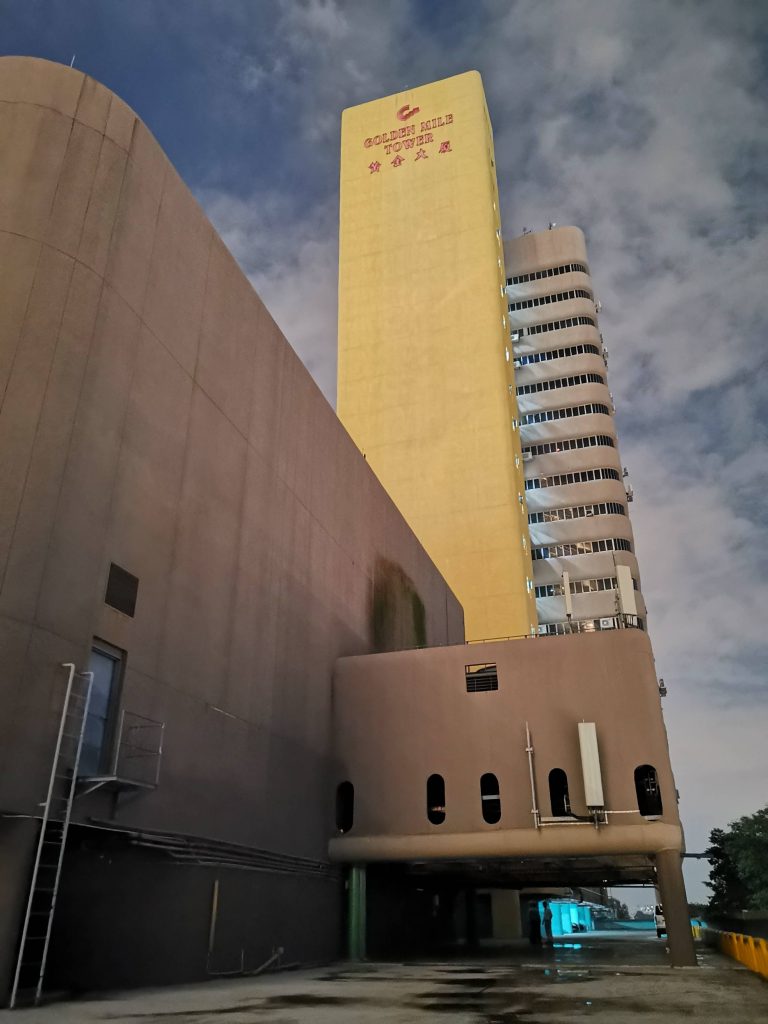
The iconic color and facade design of Golden Mile Tower make the building recognizable even from afar.
Golden Mile Complex and Golden Mile Tower are two prominent buildings that were part of Singapore’s plan to facilitate greater flexibility and autonomy in the comprehensive redevelopment of Singapore Central Area. The buildings stretch out in between Nicoll Highway and Beach road.
Golden Mile Complex is a mixed-use development which consists of commercial, residential, entertainment services, and transportation center. It is a megastructure which was designed by Gan Eng Oon, William Lim and Tay Kheng Soon of the Singapore architect firm, Design Partnership (DP Architects). The vertical stepping blocks that form the unique terraces of the building has crowned the Golden Mile Complex to be one of the buildings with brutalism architectural style. Located at the next plot of land, the 24-storey building of Golden Mile Tower consists of rental office and retail space. The building was design by Goh Hock Guan Design Team.
The two buildings are also been known as ‘Little Thailand’ due to the number of Thai cultured activities and stores that could be found within these buildings.
Our initiative from the Lighting Detectives is to look for ways to enhance such preliminary buildings for Singapore’s redevelopment period into a new perspective using our best element named light and shadow.
On the event day, the participants were gathered at the ground floor of Golden Mile Complex. Due to the strict regulation from the building management, we had to limit the number of participants to a maximum of 20 spots. More than half of them are practising in the architecture and design industry, while the others are non-designers who are curious and have enthusiasm towards architecture in Singapore.
Nightwalk – Golden Mile Complex + Tower
Minutes away from the blue moment, we rallied them into the office area of Golden Mile Complex after gathering near the Taxi stand. After a short experiential walkthrough the grocery and restaurant areas that fill the 1st to 4th storey, the participants were briefed on gathering their thoughts and opinions on architectural origins and preservation of both Golden Mile Complex and Golden Mile Tower.
We each guided a group of approximately 7-8 Detectives through the open zig-zag stairwells towards the blue tint of the skylight at the top to uncover the overlapping of natural light within the office area. Detectives were thrilled to uncover that despite the brutalism style, the architecture of Golden Mile Complex catered for natural lighting that brings a glimpse of reliefs to the brutalist labyrinth of offices below. Upon reaching the top, discoveries of character filled residential units contrast the mundane sections below.
Upon reaching the top, discoveries of character filled residential units contrast the mundane sections below.
We continued to Golden Mile Tower through a smokey underpass not known to many of the public. Detectives were treated to a multi-sensory stimulation as the air fills with cigarette smog and chatters from bar hostesses during their break, dashed with neon lights from the bar signages. Emerging from the underpass, investigation tour brought detectives through Golder Mile Tower where several local-known amenities such as inter-country buses to Malaysia and Thailand, military sewing shops and an indie cinema from 1973 were hidden within the unique mix of overspill activities from Golden Mile Complex.
Lighting Detectives investigation segment concluded with spectacular views of the city skyline from both the multi-storey carpark and Level 22 of Golden Mile Tower. Detectives consolidated their thoughts to share views on architectural history preservation efforts for the workshop planned later.
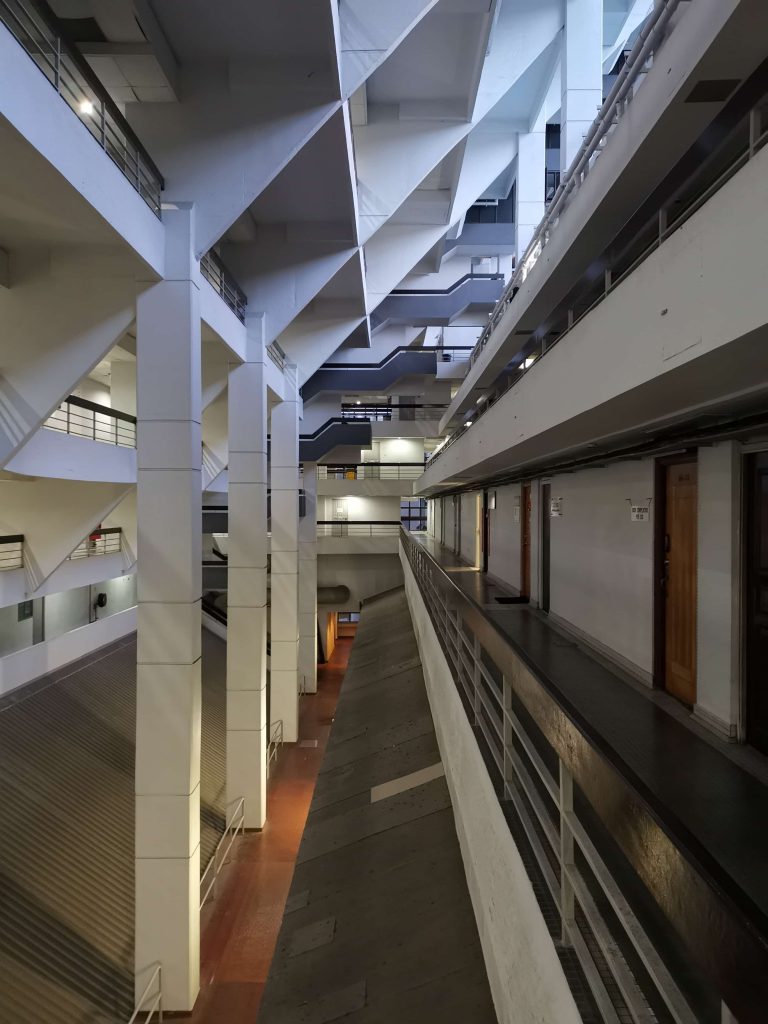
Natural lights from Architectural provision seemlessly harmonizing with lighting fixtures creating a mild symphony in the office section.
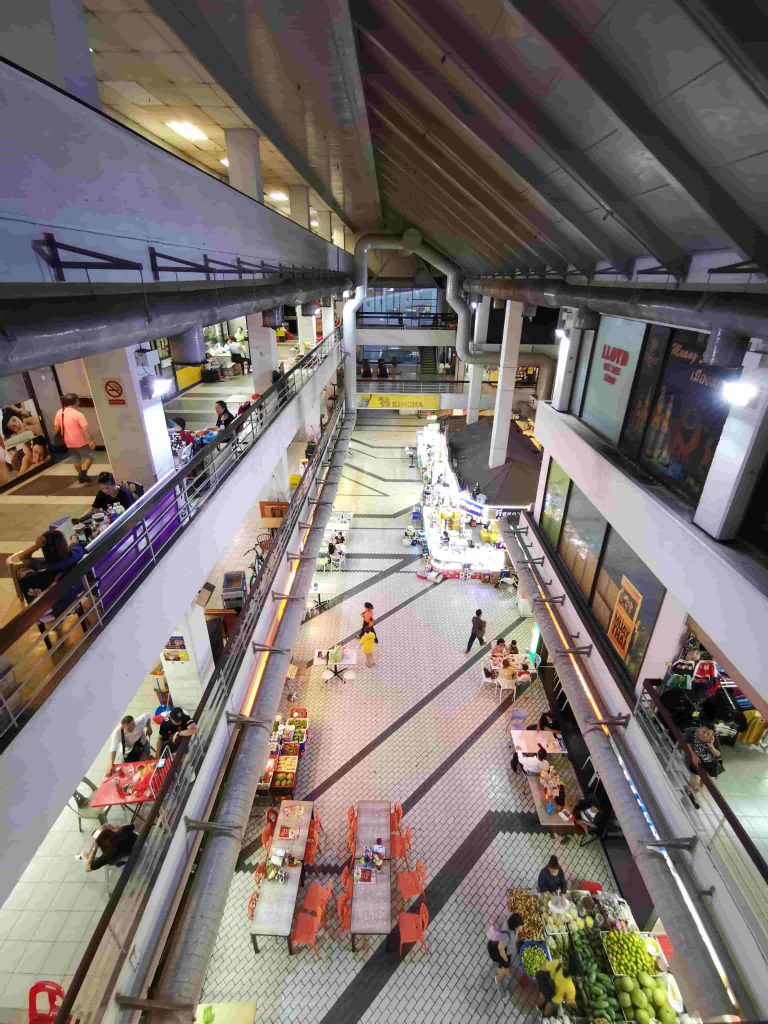
Infusion of colours and smell of Thai produce creates a juxtaposition of senses once you enter Golden Mile omplex’s retail premises.
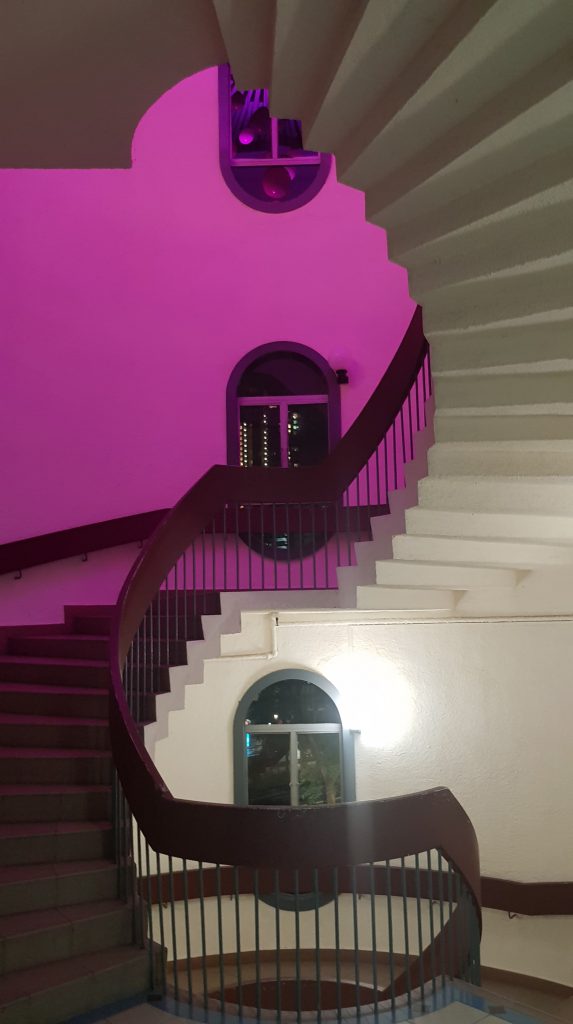
The featured spiral staircase connects all floors at the building podium, including the indie cinema,and gives a distinct characteristic to Golden Mile Tower.
Workshop
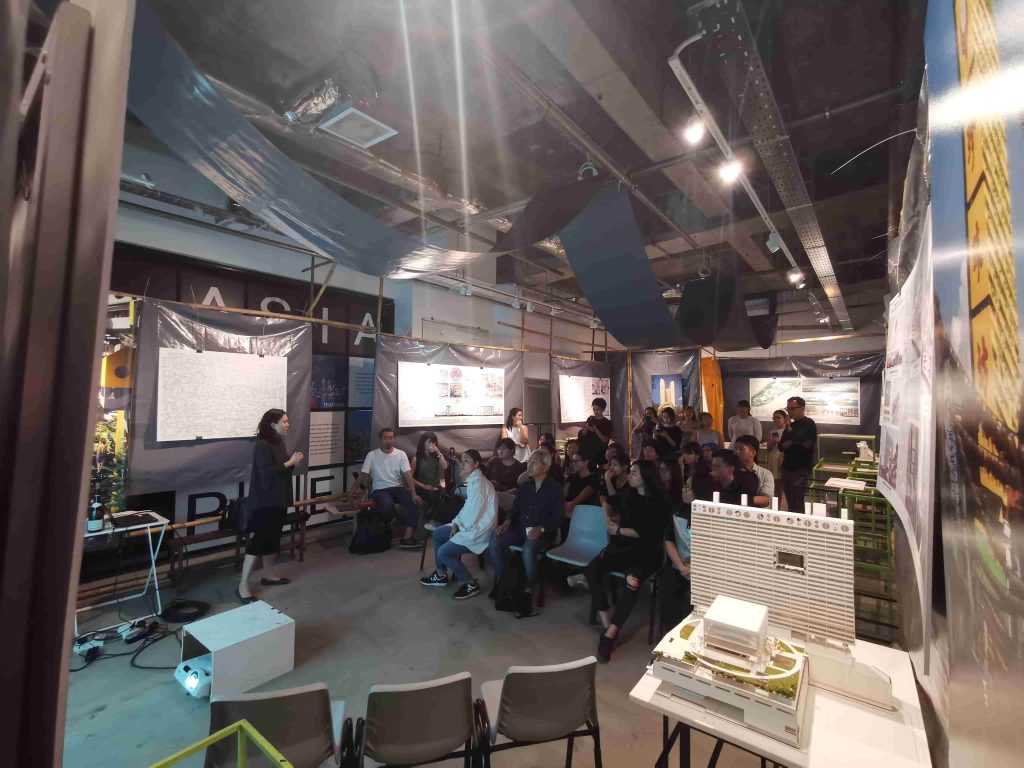
All of the participants drawn to the presentation by one of our Lighting Detectives.
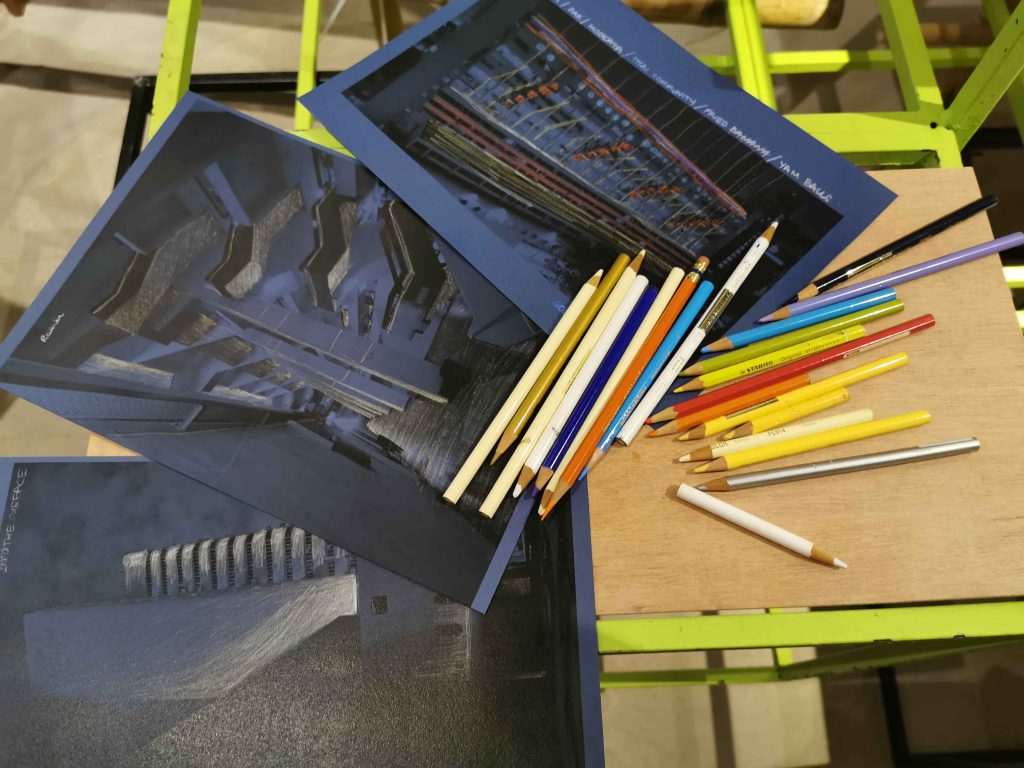
Sketches on the blue-paper and colour pencils are the Lighting Detective’s tools to express our ideas.It’s so easy simple!
As we walked down the iconic spiral staircase, we finally reached the end of the night walk. All participants were gathered inside an exhibition space at Golden Mile Tower for a workshop and discussion about the historical buildings. We began with an introduction about Lighting Detectives. Prior to the introduction, architect Randy Chan from Zarch Collaboratives took the opportunity to share his valuable knowledge and insights on both Golden Mile Complex and Tower. Randy explained the design concept of the building was to be the first mix-used building in Singapore with a live-work-play concept, how it was designed to be monumental and massive in scale, and how it evolved to be one of the biggest space for Thai community in Singapore.
Furthermore, he also shared the current issues and challenges in preserving the iconic and historic buildings, and the efforts to gain government and public support on the conservation project.
The workshop continues to the next session where we engaged everyone to participate. We started to re-imagine how the two iconic buildings would look like in different lighting schemes. By using the building images that are printed on the blue-paper and coloured pencils, all Detectives immediately poured the bright ideas in their mind into the sketches. Everyone was given a brief time to share the ideas that they have drawn, their impression and opinion on the architecture, as well as their expectation in the future.
Majority of us agree that the buildings should be preserved as much as possible since they have become iconic to Singapore cityscape. Some of us also expressed that lighting could contribute to make the building looks more attractive, either by using a subtle lighting design or a bold and daring solution. Nevertheless, it was very interesting to see various opinions and expressions. it was a memorable experience for all of us to be able to observe the iconic buildings closely and to re-imagine a different perception of the buildings through lighting. Special thanks to Randy Chan for supporting this event, and to the building management team for allowing the permission.
In the near future, we are planning to have a follow-up event to light-up Golden Mile Complex and Golden Mile Tower. Stay tuned! (Niken Wulandari Sutanto)







